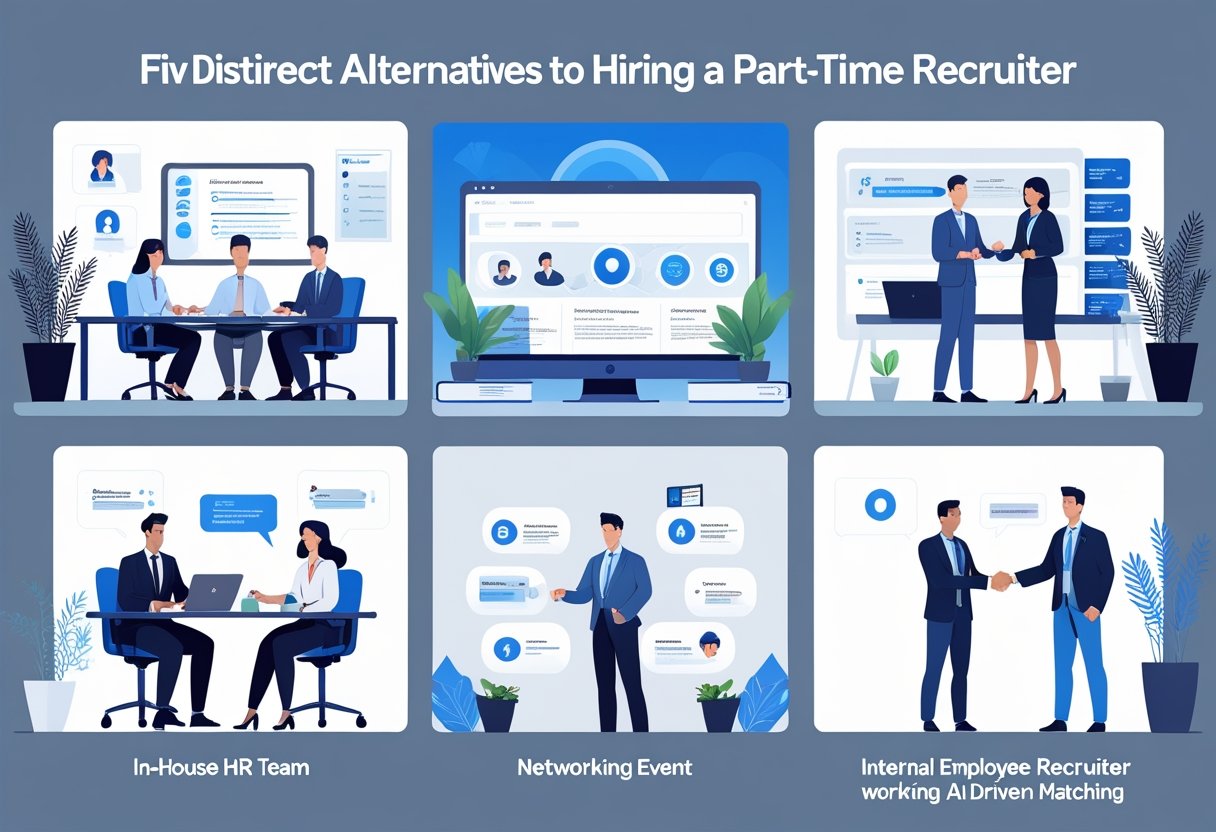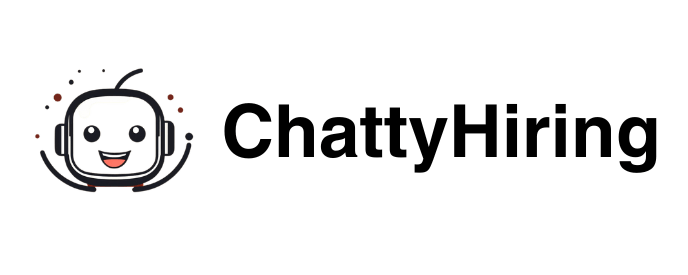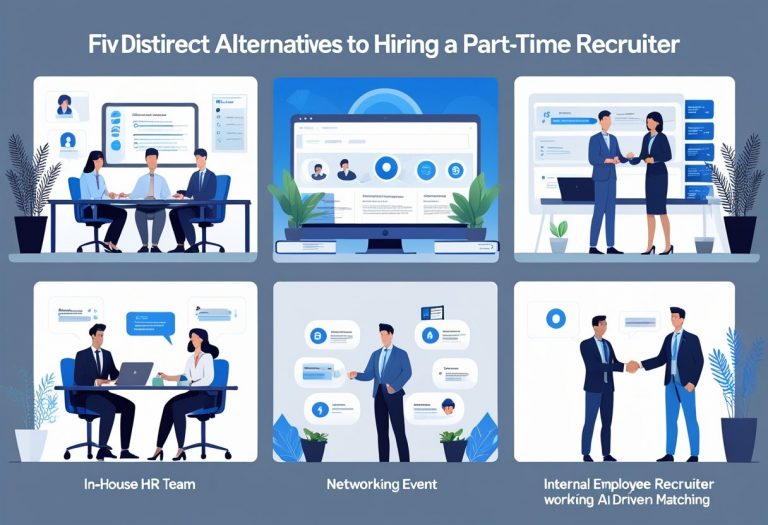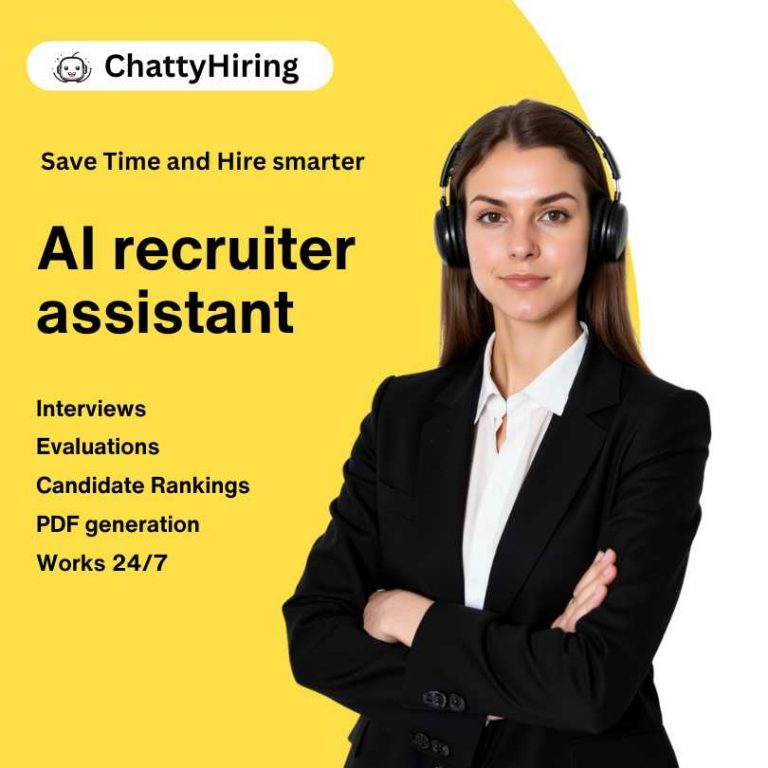Many businesses face the challenge of needing talent acquisition support without the commitment or expense of hiring a full-time recruiter.
While part-time recruiters seem like a logical middle ground, they aren’t the only solution for companies struggling with their hiring needs.

Companies can choose from several cost-effective alternatives like staff leasing, outsourcing, and subcontracting.
Each option offers unique benefits depending on company size, budget, and specific hiring requirements.
Understanding these alternatives helps business leaders make smarter decisions about their talent acquisition strategy.
The right choice can save money, reduce time-to-hire, and improve candidate quality for both immediate and long-term hiring goals.
Understanding Part-Time Recruiter Hiring

Part-time recruiters give businesses access to professional sourcing and screening expertise without the full-time commitment and costs.
Companies need to weigh the benefits of specialized recruitment skills against drawbacks like limited availability and higher per-hour rates.
When Hiring a Recruiter Makes Sense
Companies benefit most from part-time recruiters when they lack in-house HR expertise or face tough talent markets.
A dedicated recruiter brings specialized knowledge of sourcing, candidate vetting, and market salary data.
High-volume hiring periods make recruiters especially valuable.
During rapid expansion or seasonal spikes, external recruitment support helps prevent overwhelmed teams from making rushed hiring decisions.
Niche roles often need industry-specific knowledge that internal teams may not have.
Technical, executive, or specialized trade positions benefit from recruiters who understand exact skill requirements and compensation benchmarks.
Companies with limited HR resources use part-time recruiters to fill critical gaps.
Small businesses without dedicated HR staff can access professional recruitment expertise without hiring full-time.
Time-sensitive positions justify recruiter spend when vacant roles impact revenue or operations.
A faster hiring process with professional recruitment often offsets the extra cost.
Drawbacks of Relying on Recruiters
External recruiters might not fully grasp company culture or long-term hiring needs.
This disconnect sometimes leads to candidates who have the skills but miss the cultural fit.
Limited control over the hiring process can be tricky for companies with specific requirements.
Recruiters often focus on filling roles quickly, which might not align with thorough internal vetting.
Dependency risks show up when companies lean too much on external recruitment.
Internal teams might lose their hiring skills and market awareness over time.
Communication gaps between recruiters and hiring managers can result in mismatched candidates.
Without clear role requirements and expectations, recruiters might send over unsuitable applicants.
Brand representation is also a concern.
External recruiters act as your brand’s face to candidates, so poor performance can hurt your reputation in the talent market.
Cost Implications and Considerations
Part-time recruiter fees usually range from $75-150 per hour, with experienced pros charging more.
Companies need to decide if these costs are worth the time savings and candidate quality boost.
Fee structures vary a lot.
Some recruiters bill hourly, others by project, and some work on retainer for ongoing support.
Most recruiters want minimum time commitments even for part-time gigs.
Expect 10-20 hours per week minimums, which could be more than you need during slow periods.
Hidden costs include onboarding the recruiter, coordination meetings, and extra screening if quality slips.
These add up beyond the hourly rates.
Companies should compare recruiter costs with other recruitment methods like employee referral programs or direct sourcing.
Building internal recruitment capability might deliver better long-term value than always relying on external support.
Top 5 Recruitment Alternatives to Part-Time Recruiters

Companies have several proven ways to manage their hiring needs without bringing on a part-time recruiter.
These options range from job boards and recruitment advertising to building in-house talent acquisition teams or working with external specialists.
Using Job Boards and Recruitment Advertising
Job boards are one of the most direct staffing agency alternatives for employers.
You can post jobs directly on platforms like Indeed, LinkedIn, or industry-specific sites.
This approach gives you total control over job ads and employer branding.
You can write descriptions that fit your company culture and values perfectly.
Key advantages include:
- Lower costs compared to agency fees
- Direct access to candidates
- Better brand control
- Faster posting and response times
Most job boards charge flat fees, not percentages, which helps with budgeting and often reduces total hiring costs.
It’s smart to post on multiple platforms to reach different talent pools.
Each board attracts different types of job seekers and skill levels.
Leveraging Applicant Tracking Systems
An ATS helps HR teams manage large hiring campaigns while keeping the candidate experience positive.
These systems store candidate data, track applications, and automate communications.
Modern ATS platforms offer:
- Resume parsing and storage
- Interview scheduling tools
- Automated email replies
- Candidate ranking features
ATS software cuts down on manual tasks that usually require recruiter hours.
You can screen, contact, and move candidates through your hiring funnel efficiently.
Cost comparison:
| Method | Monthly Cost | Setup Time |
|---|---|---|
| ATS Software | $100-500 | 1-2 weeks |
| Part-time Recruiter | $3,000-5,000 | 2-4 weeks |
ATS systems are excellent for companies with steady hiring needs.
They offer long-term value and help standardize hiring across departments.
Building an In-House Hiring Team
Creating your own internal team gives you the most control over recruitment.
An in-house recruiter gets to know your company culture and can represent your brand authentically to candidates.
Internal teams are best for organizations with ongoing hiring needs.
They develop deep knowledge of role requirements and what makes a good fit over time.
Team structure ideas:
- HR generalist with recruiting responsibilities
- Dedicated in-house recruiter
- Recruiting coordinator working with hiring managers
In-house recruiters cost more upfront but deliver better value long-term.
They build relationships with candidates and create pipelines for future openings.
You can train your staff on recruiting best practices, improving hiring quality and reducing reliance on outside help.
Engaging Recruitment Consultants or Fractional Recruiters
Fractional recruitment is a sweet spot between full-time hires and traditional staffing agencies.
These consultants work part-time or on specific projects with multiple clients.
Benefits of fractional recruiters:
- Specialized expertise for tough roles
- Lower costs than full-time hires
- Flexible engagement terms
- Industry connections and networks
Recruitment consultants usually charge by the hour or by project.
This model gives you more cost control than percentage-based agency fees.
Fractional recruiters are excellent for seasonal hiring or when you need niche skills.
They bring expertise without locking you into long-term commitments.
Be sure to define the project scope and success metrics clearly so the consultant delivers the results you want, on time and within budget.
Outsourcing Through Staff Leasing or Subcontracting
Staff leasing and subcontracting are hiring alternatives that skip traditional recruitment altogether.
You can access skilled workers without going through the usual hiring process.
Staff leasing means:
- Partnering with staffing firms
- Accessing pre-vetted talent pools
- Flexible contracts
- Less admin hassle
Subcontracting is great for project-based work or specialized gigs.
You pay for completed work, not employee time or benefits.
When to consider outsourcing:
- Short-term project needs
- Specialized skill sets
- Seasonal work spikes
- Testing new markets
These approaches cut hiring risks and lower admin costs.
You can scale your team up or down as needed, without recruitment delays.
How to Evaluate and Choose the Right Hiring Method
Different hiring methods need careful review based on your needs, budget, and company goals.
The most effective approach combines clear timelines, realistic cost estimates, and alignment with your company’s values.
Defining Your Recruitment Needs and Timeline
Start by identifying your hiring requirements and how urgent they are.
The best hiring approach depends on role type, timeline, urgency, budget, and internal HR bandwidth.
Immediate needs (1-2 weeks) work best with employee referrals or internal promotions.
These methods skip lengthy screening and use your existing networks.
Short-term needs (2-8 weeks) are suited for direct sourcing through job boards or social media.
Your HR team can handle the admin while keeping control of the process.
Long-term strategic hires (2-6 months) let you build a talent pipeline.
You can invest time in building relationships with candidates before openings arise.
Volume hiring needs a different approach than filling a single niche role.
High-volume recruitment benefits from streamlined processes, while specialized jobs need targeted sourcing.
Match your hiring model to the complexity of the role.
Entry-level positions need simpler screening methods than executive searches.
Assessing Budget and Recruitment Costs
Budgeting goes beyond obvious expenses to include hidden costs and time investments.
Recruitment costs vary widely between hiring methods.
Direct costs cover job postings, background checks, and assessment tools.
Social media recruiting is often cheaper than traditional job boards.
Indirect costs include HR time spent on admin, interviews, and candidate communication.
These add up quickly if the recruitment process drags on.
Quality metrics matter more than speed.
Data-driven hiring leads to better candidate selection.
Bad hires are expensive, with replacement costs ranging from 50% to 200% of annual salary.
ROI calculations should include training time, productivity ramp-up, and retention rates.
Some methods cost more upfront but deliver better long-term outcomes.
Aligning with Company Culture and Employer Brand
Your hiring method should reflect your company’s values and attract candidates who fit your culture.
Alternative recruitment methods help companies gain a competitive edge by reaching diverse talent pools.
Brand consistency across all channels builds trust with candidates.
The application process is their first impression of your company.
Cultural fit assessment needs methods that reveal personality and work style.
Traditional interviews might miss key behavioral cues.
Diversity goals also shape your approach.
Working with advocacy groups can help you find diverse talent who may not see your job ads.
Communication style during recruitment should match your daily work vibe.
Formal processes fit corporate settings, while casual ones suit startups.
Your recruitment process is part of your employer brand story.
Candidates share their experiences, which impacts your future talent pool.
Long-Term Impacts on Recruitment and Onboarding
Companies that skip hiring part-time recruiters might end up with higher turnover and weaker onboarding.
These issues can snowball, making recruitment challenges harder to solve down the road.
Reducing High Turnover Risks
High turnover drains resources and hurts team performance.
When businesses rush hiring without proper talent acquisition expertise, they often pick candidates who won’t last.
Traditional hiring methods require big investments in recruitment, onboarding, and training.
Without dedicated recruitment support, it’s tough to spot red flags during interviews.
Poor hiring choices lead to:
- Replacement expenses: Recruiting and training new team members
- Lost productivity: Gaps between departures and new hires
- Team disruption: Extra workload for the remaining staff
- Knowledge loss: Valuable skills and experience walking out the door
High turnover rates drive up onboarding costs and can hurt cultural alignment.
This impacts team unity and overall output.
Recruitment agencies use systematic processes that lower these risks.
They vet candidates thoroughly and match skills to your long-term goals.
Improving the Onboarding Process
Weak onboarding processes can hurt employee retention right from the start.
New hires who don’t get proper support often leave within their first few months.
Structured onboarding offers new hires a safety net, making them feel supported as they pick up new responsibilities.
This creates positive experiences that set employees up for long-term success.
Organizations without recruitment expertise sometimes rush onboarding.
They may overlook key elements such as:
- Clear job expectations: Specific goals and performance metrics
- Cultural integration: Understanding company values and practices
- Training schedules: Step-by-step skill development plans
- Mentor assignments: Experienced staff to guide new employees
Thoughtful talent acquisition and onboarding strategies influence retention and engagement.
Recruitment professionals can help design onboarding programs that deliver results.
These systems provide consistency and ensure new hires build a strong foundation to excel.
-

A passionate advocate for the future of HR innovation. With expertise in leveraging AI to revolutionize recruitment processes, Carlos has a clear vision: empower HR teams while creating meaningful candidate experiences.
View all posts





